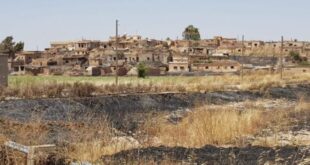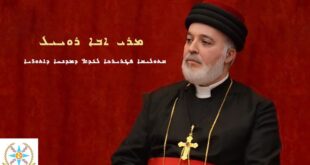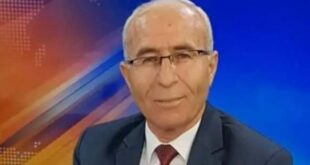By Dr. Bhaskar Dasgupta
Baghdad – desicritics — I nearly fell out of my chair when I stumbled over a tiny piece of news about the fact that August 7th has been declared as the Memorial Day for Assyrian Martyrs. Assyrians? Surely somebody is pulling my leg or its April fool’s day.
Assyrians as a people died out millennia ago, and for a press release coming out commemorating August 7th as Martyr’s day for them sounded a total joke to me. After I had managed to drag my carcass up from the floor, collected my jaw and settle down my oculars, I went digging into this strange and interesting news-story which I thought I would share with you dear readers. Here is what I found out. There are approximately 1.8 million Assyrians scattered around the globe, but mainly in Iraq, USA and Syria.
Previously inhabiting a swathe of territory ranging from Lebanon, Syria, Iraq, Iran and bits of the Caucuses, genocide and ethnic cleansing meant that a lot of them have emigrated to other countries. The link to the ancient Assyrians seems to be a bit weak and not very clear, but I suppose it is very difficult to establish it either way, even with DNA testing. What is interesting is that these modern day Assyrians have a different culture, language and religion to their Iraqi, Kurdish, Iranian and Syrian neighbours.
The language spoken by the Assyrians is Aramaic. If one is a movie goer or follows the tinsel-town news, one would know that Mel Gibson recently made a film about Jesus and used Aramaic in this film. Historians posit that the language of Jesus and the early Christians was Aramaic. Of course, any language would change over the course of couple of millennia, but it is apparently still heavily related to its roots of ancient Aramaic.
The current day language borrows from Hebrew, Arabic, Syriac and Akkadian languages. The religion which they follow is Christianity, and they follow the Chaldean Church of Babylon in Iraq, the Assyrian Church or Chaldean or Assyro-Chaldean Church in Syria, and Church of the East in Iran. There seems to be some confusion but the Syrian Orthodox Church who also consider themselves as Assyrians or Arameans. Be that as it may, these are minor details. There has been much to’ing and fro’ing between the Roman Catholic Church of Rome with some elements of the Church of the East becoming catholic, while others have maintained their own unique church, liturgy and theological aspects.
An interesting aside, the Assyrians literally believe in one passage in the Bible which says, “In that day there shall be a way from Egypt to the Assyrians, and the Assyrian shall enter into Egypt, and the Egyptian to the Assyrians, and the Egyptians shall serve the Assyrian. In that day shall Israel be the third to the Egyptian and the Assyrian: a blessing in the midst of the land, Which the Lord of hosts hath blessed, saying: “Blessed be my people of Egypt, and the work of my hands to the Assyrian: but Israel is my inheritance.” (Isaiah 19:23-25).” This has been repeated in many Assyrian websites and mailing lists, it is an article of faith for them. Egypt is their promised land, and between Egypt and Israel, the Assyrians will be the lord and masters. Now the situation in the Middle East is difficult and convoluted enough to attempt to understand without bringing in more complexity like this.
Imagine me writing an alternative history of the region, or a fantasy tract. And then we have these Assyrians coming over the hills (or is that the Golan Heights?) and sweeping the Israeli’s and Egyptian border pickets and armies away, the respective armies melting away, and a new Assyrian state is born in this region. Many have created a state in this area comprising of Israel major and Egypt in the past, such as the Romans, Ottomans, etc. but this one should be good and interesting. It will really set the local politics alight.
I wonder what will happen to the various other ‘promised land theories’? Actually, here’s a theological quandary for you, if the God of the Christians, Jews and Muslims is the same, how did he manage to promise the same few kilometres of land to so many different people? And for crying out loud, out of the billions and gazillions of kilometres in the universe and on this earth, why in the name of all that’s holy (no pun intended) did he have to pick those few concentrated kilometres? But while these Assyrians, at least in this essay, have been portrayed as a single ethnic group, the reality was different in the last century.
Even though they share the culture, history, language and religion, they had been fragmented to a large degree over language dialects, religious differences, historical backgrounds, etc., but recently with the rise of internet communications, and use of English as a common external language it is bringing this community together again. What is very impressive is that they have managed to keep an ancient language, Aramaic alive and in common use for such a long time. Think back on other ancient languages such as Latin and Sanskrit, which are unfortunately no longer in common usage.
This group of people have a rather interestingly and well documented history of being persecuted. A website I found notes the first persecution way back to 107 A.D. when the Parthian king Xosroes murdered the second bishop of Arbela (modern Arbil). In 448 A.D., King Yasdegerd II lead the Persians to knock off more than hundred thousand Assyrians in and around Kirkuk in modern day Northern Iraq or Kurdistan. And so on and so forth, being persecuted by the Jews, Muslims, Parthians, Mongols, Kurds, you name it. Between Iran, Iraq and Syria, the Kurds seems to have really got it in for them. And these Assyrians were also part of the group of Maronite Christians in current Lebanon and participated in the civil war which sadly seems to be picking up steam again.
But these chaps have really suffered, so much so that they were called as the Martyr’s Church by Pope John Paul II, because no other church has been the unfortunate recipient of concentrated martyrdom, persecution and massacres just for belonging to this religion/church. This church seems to have grown and it pops up in the most amazing of places. The South Indian church is linked to the Assyrians, where it is known as the Chaldean Syrian Church. Kerala, the southern state, has had long trading links with the Middle East and this is where it’s believed (on very little factual basis mind you) that the Apostle Thomas landed and converted many locals to Christianity.
The Portuguese tried to convert these people to Catholicism, but didn’t really manage to do so, but guess what? There seems to be a right royal theological war going on between Catholicism and Syrian Christians in India, with the equivalent of a SWAT team being sent by Antiochene Church in Jerusalem in 1665 to help fight off these pesky Catholics. This church is also present in USA, Australia and New Zealand and in some smaller numbers in Russia and other countries.
When I started to research this and talking to my sister about it, it was almost like being an internet Indiana Jones. Fascinating to dig around and discuss this little nugget of information. But for these Assyrians, life is not that easy. They are dissipated across a vast landscape, persecuted by and in the states in the Middle East where they live, difficult language and communication problems. It will indeed be a shame for this amazing cultural and religious group to die out, but they will have to make extraordinary efforts to create a self identity and grow into a confident part of the greater comity of nations.
The Assyrians should take the words of Irena Klepfisz, a famous Jewish poetess and writer to heart. Irena said about her people and language: “Yiddish acted as the cement that bound the Jewish community together on a socialist foundation. What language we spoke was critical. It reflected our identity, our loyalty, our distinctness not only from the gentile environment, but from other Jews as well. The use of Yiddish was an expression not only of love of a language, but of pride in ourselves as a people; it was an acknowledgment of a historical and cultural yerushe, heritage, a link to generations of Jews who came before and to the political activists of Eastern Europe. Above all it was the symbol of resistance to assimilation, an insistence on remaining who we were.” All this to be taken with a grain of piquant salt!
 Assyrian Democratic Organization ADO
Assyrian Democratic Organization ADO






